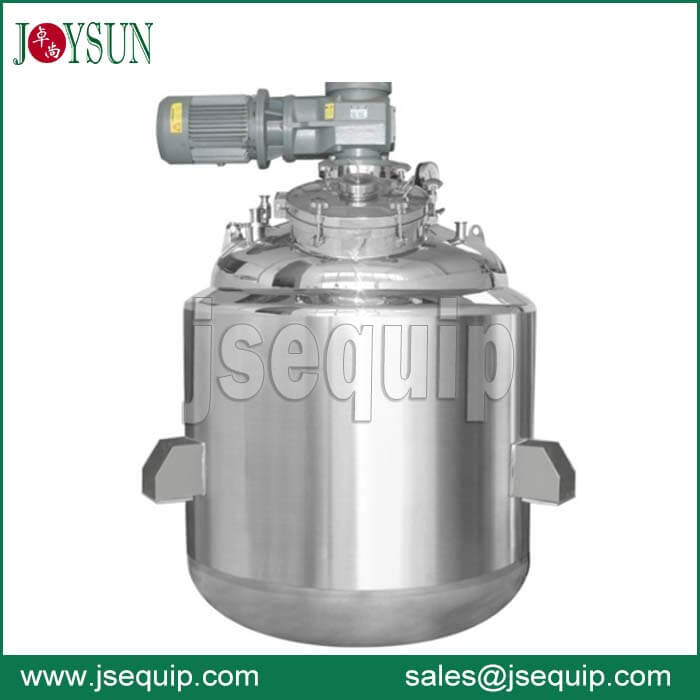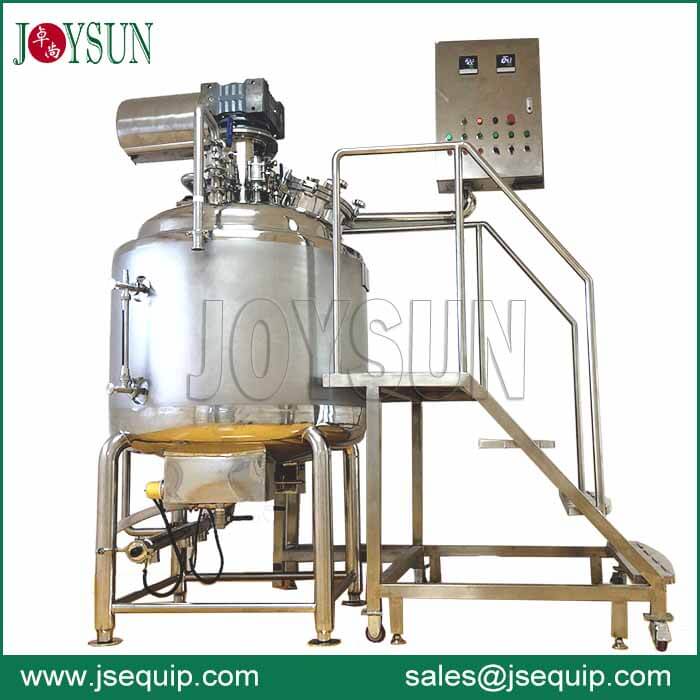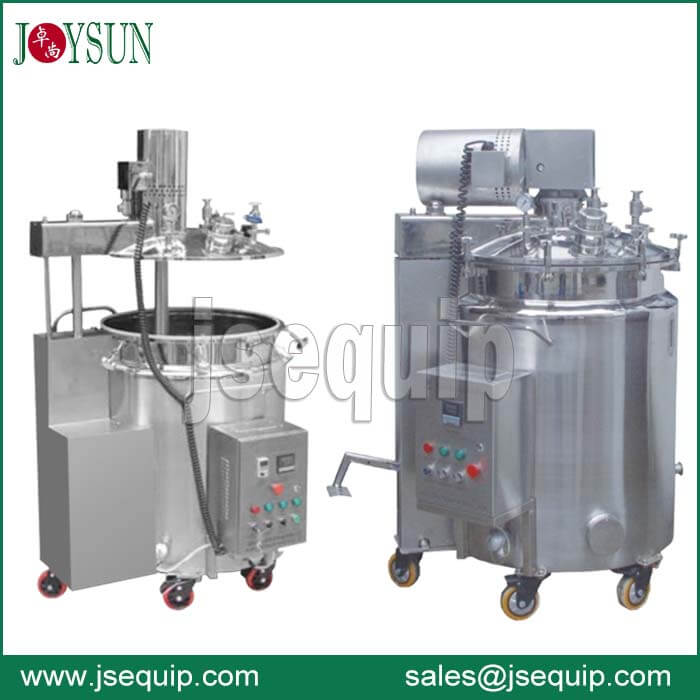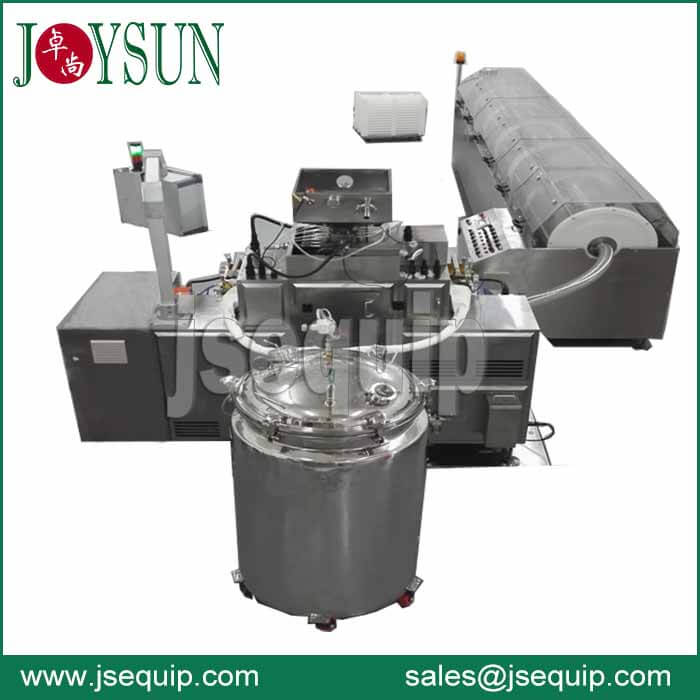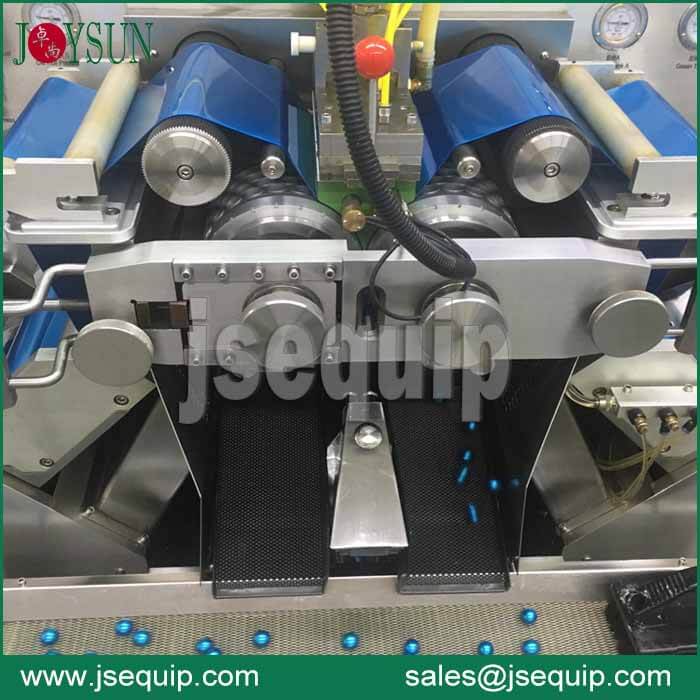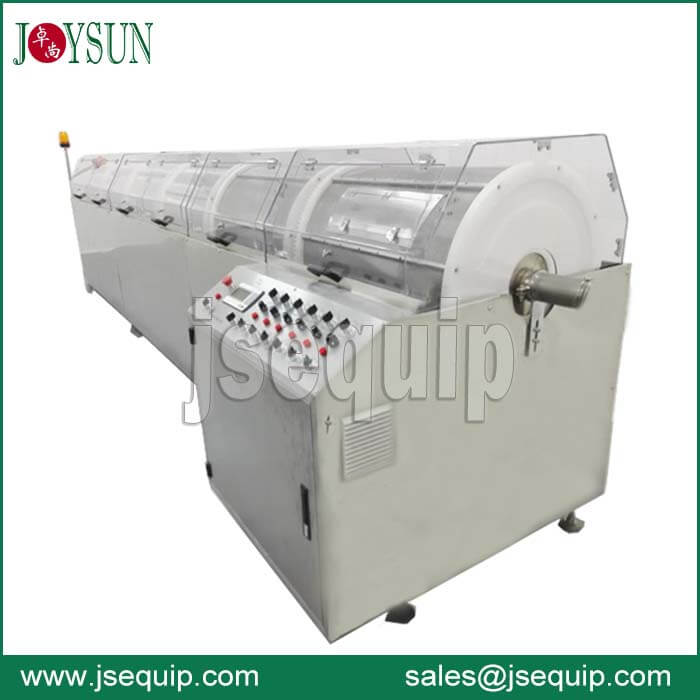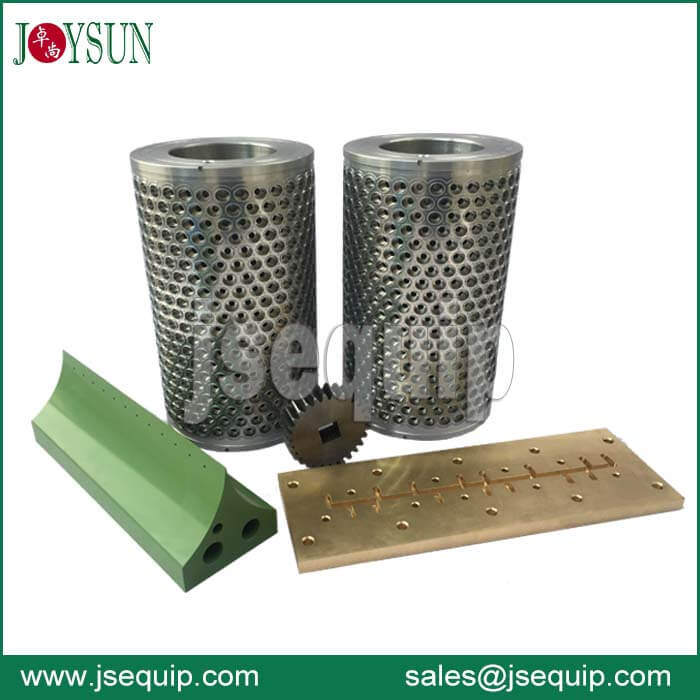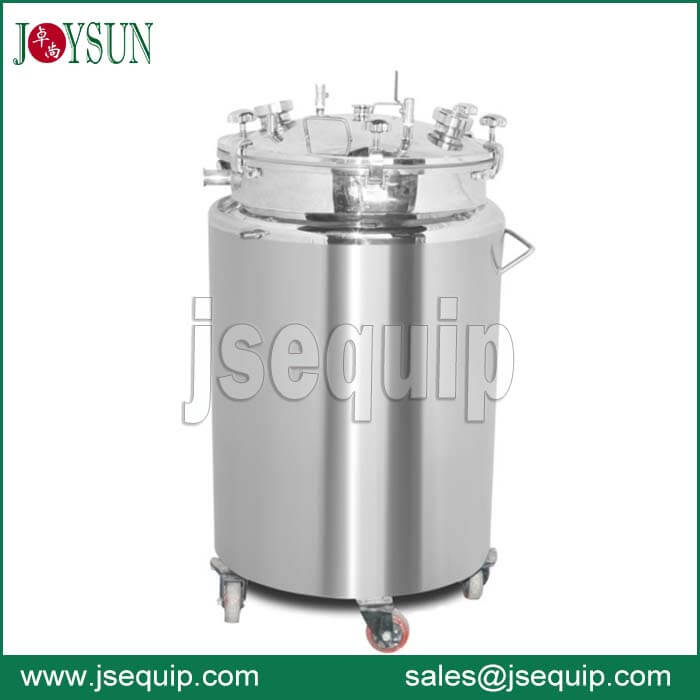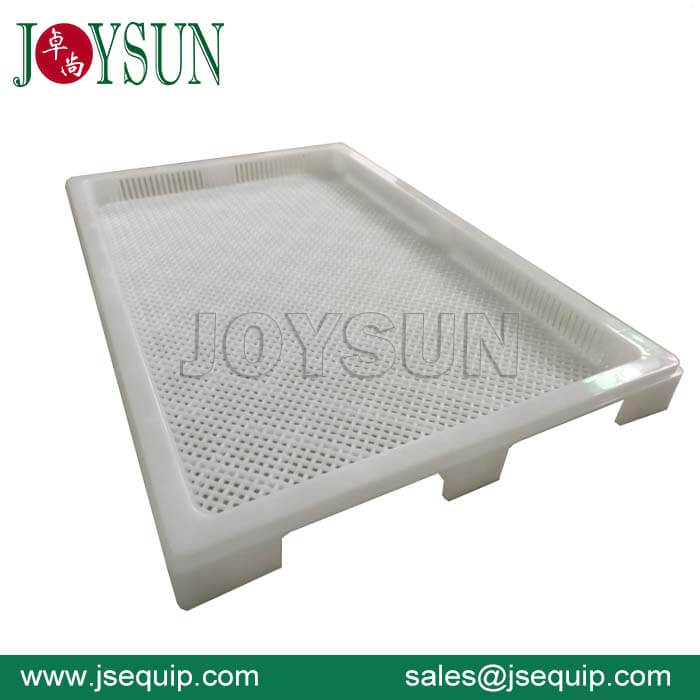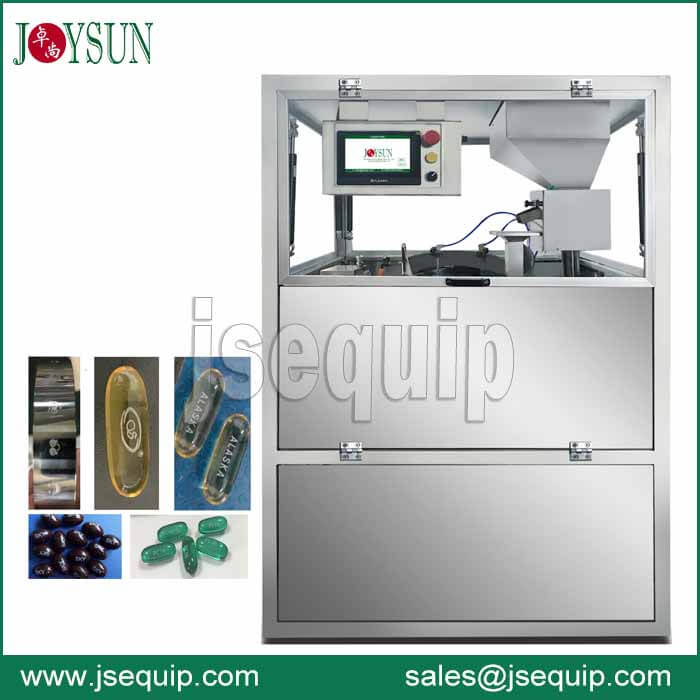Quick Guidance for Purchasing Gelatin Melting Tank
What is gelatin melter’s structure and major parts?
We know that gelatin melter is an inevitable device in softgel manufacturing. It is to melt gelatin powder and mix it with water and glycerin at a proper portion. The gelatin solution will become a qualified mass for softgel formulation. Gelatin melter composes of many parts mechanically and electrically, main items list as below:
Tank body: To melt gelatin, the tank in most cases will adopt slender shape, where tank height/ tank width is to a certain ratio. With slender design, the heat is faster and easier to transfer to the gelatin mass. Therefore, we seldom make ‘fat’ tanks unless there is height limit in cleanroom.
Heating Jacket: The gelatin melter is a jacketed structure where the user can fill water or oil inside. Heating material inside the jacket warms up to let the gelatin mass melted. Gelatin needs a temperature of 80℃ to be melted totally. We suggest users to have water circulated between the jacket and hot water exchanger. In this way, heat exchanging is faster.
Insulation layer: This is for the safety of operators. When the tank starts working and warming up to about 80celsius degree; the tank outer surface will be very hot. There will be skin burns if the worker accidently leads his body to the tank. By stuffing polyurethane/PU material in the insulation layer, it will be safer to use.
Stirring Motor: user should choose a motor and reducer with big enough power and strong torsion upon gelatin tank size and batch weight. Let’s say if the motor power is smaller than need, potential issue during melting is that there are abnormal noises coming from the inside tank. If the motor is too big, it is an unnecessary cost for motor and there is more power consumption. With our experience in softgel gelatin tank manufacturing, we’d be able to suggest the best combination and configuration on tanks.
Mixing Agitator: 0-35RPM (round per minute) rotation speed of the agitator is suggested to use for gelatin powder mixing. By this speed, gelatin powder can dissolve gradually and evenly. The blades on the agitator should be thick and strong to hold against the tension from gelation powder. At beginning of melting process, it looks like dough stirring.
Bottom discharge valve: specially made bottom discharge ball valve is installed at the bottom of the tank. By this valve, we reduce distance of gelatin transfer pass; before gelatin solution cools down, gelatin already is transferred into the gelatin service tank.
Manhole: the usage of manhole is for raw material feeding, and sometimes for maintenance of the tank. The hole is big enough for a worker to enter the gelatin tank; sometimes on a small size tank, this hole only allows the hand to go in.
How many types are of gelatin tanks?
Tank size speaking, there can be too many types. I’d like to simply separate gelatin melting tanks into 4 types and compare them.
I. hanging-up gelatin melter: the tank hangs up on a platform where the operators can walk onto the platform to check and inspect gelatin melting status. Currently the mostly used design due to easy operation and cleaning. During gelatin discharge, we just pull the service tank underneath the platform; gelatin mass flows down under the force of gravity. The disadvantage is that to make this type, user need a relatively larger space to install operating platform. The cleanroom is higher than most regular cleanrooms (2.5meter high). And the platform costs too.
II. standing type gelatin melting vessel: it is easy to understand that the tank is putting on the floor directly with 3 feet. The advantage about this is that there is no extra height requirement for the cleanroom. Less height, less space, so as a less energy consumption because controlling temperature and humidity within cleanroom costs.
III. Movable gelatin melting reactor/cooker: I&II types are mostly for big gelatin tank size>400Liter; while this design is best for small batches of gelatin solution from 50L-300L. Advantage: it’s a compact design, movable with strong castors. Workers can push the tanks to anywhere needed from room to room.
IV. Lifting type gelatin melter: we can also make gelatin tanks with hydraulic system where tank lid can be lifted and lowered by pressing buttons only. And the tank body can tilt to release material inside, especially useful during tank cleaning.
What is to consider when purchasing a gelatin melting tank?
The main detail to discuss with us when decide a suitable model of gelatin tank is that:
Batch size, room layout, facility like hot water source, electric power source or sometimes steam source; gelatin powder, starchgel, tapioca powder and etc. we can make melting tanks for animal gelatin and veggie powder. Starchgel and tapioca melting tank. Then we’d be able to design and send buyer drawings to check.

